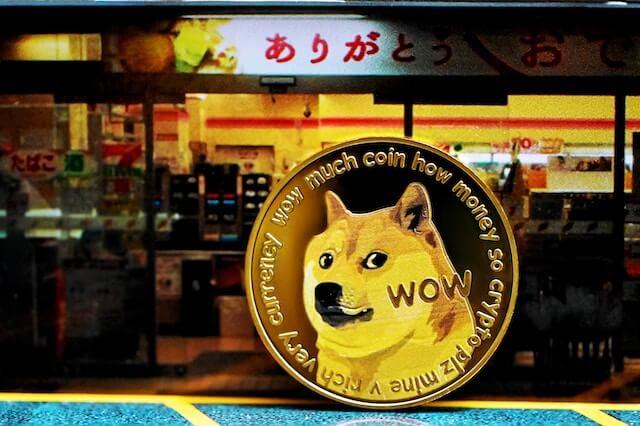Introduction to Different Categories of Cryptocurrencies
In this guide, you will learn about the various categories of cryptocurrencies that currently exist.
Cryptocurrencies can be perplexing, given the vast array of over 10,000 projects to choose from. It may feel like a daunting task to select the right ones for your portfolio, considering their varying values, teams, significance, and properties.
However, when we simplify things, we can categorize cryptocurrencies into several main groups that encompass the entirety of current digital assets and their purposes. These categories include stablecoins, tokens, and memecoins.
By examining each of these classes and understanding their advantages, this guide empowers you to construct an optimal portfolio that aligns with your specific requirements and objectives.
Crypto Coins vs Tokens
Coins and tokens are two distinct categories in the world of cryptocurrencies, each with unique roles and operating on different technological frameworks.
Coins are digital currencies that operate on their dedicated blockchains. They function as a medium of exchange, similar to traditional money.
Furthermore, coins are used for storing value and facilitating transactions between parties. Notable examples of coins include Bitcoin (BTC) and Litecoin (LTC). Coins have independent blockchain networks that provide the necessary infrastructure for their transactions and operations.
Conversely, tokens are built on existing blockchain platforms like Ethereum and do not possess their own independent blockchains.
Tokens are programmable assets that represent various entities, such as digital assets, utility or access rights within a specific ecosystem, or even physical assets in some cases. They utilize the underlying blockchain platform’s infrastructure and functionalities.
Besides, tokens serve multiple purposes, such as enabling access to decentralized applications (DApps), verifying identity, or representing ownership of specific assets. A prime instance of a token is Ether (ETH), which is Ethereum’s native token.
Learn how to stake ETH for rewards here : https://www.kintechie.com/how-to-stake-eth-on-lido-to-earn-rewards/
In conclusion, coins are autonomous digital currencies operating on self-contained blockchains, while tokens are developed on existing blockchain platforms and fulfill diverse roles within those ecosystems.
Different Categories of Cryptocurrencies
Utility Tokens
Certain cryptocurrencies are designed specifically to facilitate transactions and cover expenses within a specific application. These types of cryptocurrencies are referred to as utility tokens.
In decentralized finance (DeFi) applications, whenever a transaction takes place, the underlying blockchain imposes a fee. The founders of Ethereum initially termed this fee as a gas fee, a name that has since become widely used.
Moreover, to cover these fees, publishers of blockchain-based applications need to collect them from users of the decentralized application (dApp).
Furthermore, utility tokens are often offered to investors through a pre-sale phase before the project’s official launch. The funds raised during this pre-sale stage are utilized to support the development of the project.
Overall, If the dApp gains popularity and the price of the utility token increases, investors can generate profits.
Governance Tokens
If you acquire a significant amount of stock in a publicly traded company, you might have the opportunity to join the board of directors and actively participate in voting on matters that impact the company’s future.
Similarly, in the realm of cryptocurrencies, you can earn voting rights by purchasing governance tokens.
Furthermore, within the domain of decentralized finance (DeFi) projects, governance tokens are often issued to grant stakeholders a say in shaping future decision-making processes.
When crucial choices arise, such as adjustments to gas fees, coin holders are able to vote, with the voting power proportionate to the number of coins they possess.
Moreover, when a group of coin owners collectively possesses complete control, they may be referred to as a decentralized autonomous organization (DAO).
DeFi Coins
DeFi (Decentralized Finance) coins are a specific type of cryptocurrency that has been purposefully designed to facilitate decentralized financial transactions and services through the utilization of blockchain technology.
Unlike traditional finance, which heavily relies on centralized intermediaries like banks or financial institutions, DeFi currencies enable users to engage with financial products and services directly, without the need for intermediaries.
The primary objective of DeFi coins is to offer a broad spectrum of financial services and products, encompassing areas such as lending, trading, insurance, and more.
By utilizing smart contracts on a blockchain, DeFi currencies enable peer-to-peer transactions and interactions without the involvement of centralized intermediaries. This approach helps to reduce costs, enhance efficiency, and provide users with increased security and transparency.
Apart from popular examples like Uniswap (UNI) and SushiSwap (SUSHI), other noteworthy DeFi coins include Aave (AAVE), Compound (COMP), and Maker (MKR). These DeFi cryptocurrencies are employed to facilitate diverse financial services and products within the DeFi ecosystem, including earning interest, lending funds, or providing liquidity for decentralized exchanges and other DeFi platforms.
In summary, the main purpose of DeFi coins is to establish a more open, transparent, and accessible financial system by leveraging blockchain technology to deliver decentralized financial services and products to a global user base.
Consequently, DeFi coins are regarded as among the top cryptocurrencies to consider purchasing at present.
Metaverse Tokens
Metaverse cryptocurrencies, on the other hand, are digital currencies specifically crafted for utilization within virtual worlds and decentralized blockchain-based platforms.
Furthermore, they serve as a medium for transactions and interactions within these virtual realms, thereby enabling activities like the creation and trading of virtual assets and the acquisition of virtual real estate.
The purpose of metaverse cryptocurrencies is clear: to enhance the immersive and decentralized nature of engaging with virtual worlds and digital assets.

Consequently, these coins facilitate a diverse range of activities within virtual environments, including avatar customization, virtual structure and object creation, and various forms of user interaction.
For instance, consider Decentraland (MANA), a metaverse cryptocurrency utilized for buying and selling virtual real estate in the Decentraland virtual world.
Similarly, Sandbox (SAND) enables users to engage in the purchase and trading of virtual assets and experiences within The Sandbox virtual world.
In essence, metaverse cryptocurrencies provide users with a gateway to a more immersive and decentralized virtual experience.
As a result, they empower individuals to engage with virtual worlds and digital assets in unprecedented ways, ultimately expanding the boundaries of virtual exploration and interaction.
Web3 Cryptocurrencies
Web3 coins, also referred to as Web3 cryptocurrencies, are specifically designed digital currencies intended for use within the emerging Web3 ecosystem.
Moreover, the Web3 ecosystem encompasses a decentralized and blockchain-based web infrastructure that is currently being developed to revolutionize interactions and transactions on the Internet.
Furthermore, the primary aim of Web3 coins is to empower users with greater control and privacy over their data and assets within the Web3 environment. These coins enable a wide range of activities, including the exchange of digital properties, payment for decentralized services, and much more.
Consequently, they play an integral role in facilitating transactions within the revolutionary Web3 system. By adopting Web3 coins, individuals can experience enhanced autonomy, privacy, and security in their online interactions.
Also leveraging the underlying blockchain technology, Web3 coins enable users to transact and engage within the Web3 ecosystem in a decentralized and trustless manner.
Therefore, this ensures the protection of their data and assets while providing them with increased control over their digital experiences.
Furthermore, as the Web3 ecosystem continues to evolve, Web3 coins are poised to play an increasingly significant role in shaping the future of the Internet. They offer a promising avenue for individuals to participate in the decentralized web and leverage its numerous benefits.
Ultimately, this transformative technology will redefine the way we interact, transact, and engage with digital services and platforms.
Privacy Coins
Crypto-privacy, also referred to as privacy coins, are digital assets designed to safeguard user information and enhance anonymity in blockchain transactions. These tokens utilize advanced technologies, such as encryption and obfuscation, to ensure secure interactions and provide heightened protection against third parties.
Moreover, privacy cryptocurrencies offer users the utmost privacy and security when engaging in blockchain transactions.
By leveraging advanced technologies, these tokens establish a defense against surveillance, censorship, and other forms of interference, empowering users to maintain control over their financial transactions and personal data.
Furthermore, with this level of protection, individuals can confidently and securely transact, knowing that their information is shielded from any unauthorized access.
Within this compilation of the best cryptocurrencies for investment, we have included two privacy cryptocurrencies: Monero (XMR) and Zcash (ZEC).
Monero employs ring signatures and hidden addresses to enable more private transactions on its blockchain, while Zcash utilizes Zero-Knowledge proof to enable private transactions while still allowing selective transparency.
Data Storage Tokens
Big Data cryptocurrencies encompass a class of digital assets that harness the capabilities of blockchain technology and Big Data analytics to address intricate data management challenges.
Moreover, these coins leverage blockchain’s inherent features to establish secure and decentralized platforms for data storage, analysis, and management. Simultaneously, they employ Big Data tools and algorithms to extract valuable insights from vast data sets.
The primary objective of Big Data coins is to offer a more efficient and secure approach to handling and analyzing large volumes of data, while simultaneously creating avenues for monetization and value creation from such data.
Furthermore, by leveraging the potential of blockchain and Big Data, these coins possess the capability to revolutionize industries like healthcare, finance, and e-commerce.
They achieve this by providing secure and decentralized frameworks for data sharing and collaboration, consequently unlocking new possibilities for innovation and uncovering novel insights.
With their fusion of blockchain and Big Data technologies, Big Data cryptocurrencies hold immense promise in transforming the way industries handle and derive value from data.
By introducing robust and secure platforms, they enable organizations to optimize data management processes, facilitate data-driven decision-making, and explore untapped opportunities for growth and development.
Lastly, as these coins continue to evolve, they have the potential to shape the future of data-driven industries, paving the way for enhanced efficiency, security, and innovation in the realm of data management.
AI Cryptocurrencies
AI cryptocurrencies, also known as artificial intelligence-based cryptocurrencies, are a specific category of digital assets that leverage artificial intelligence technology to enhance their functionality and performance.
Consequently, these cryptocurrencies utilize machine learning algorithms and other AI techniques to automate processes, optimize performance, and enhance the overall user experience.
Moreover, the primary objective of AI cryptocurrencies is to provide a more efficient and effective means of transacting while simultaneously improving user security and privacy.
By integrating AI technology, these cryptocurrencies can offer a range of features and benefits, including faster transaction processing, enhanced security protocols, and personalized user experiences.
In other words, AI cryptocurrencies such as SingularityNET (AGIX), Fetch.ai (FET), and Cortex (CTXC) exemplify this fusion of AI and cryptocurrency.
These specific cryptocurrencies are specifically designed to provide diverse AI services and products, such as decentralized markets for AI algorithms and models, AI-powered prediction markets, and more.
For instance, by combining the advantages of blockchain technology and AI, AI cryptocurrencies strive to deliver superior performance and accuracy across various applications.
This disruptive amalgamation of technologies has the potential to transform traditional systems and offer increased reliability and protection for various processes.
Ultimately, the convergence of AI and cryptocurrencies represents an exciting frontier in the digital asset space, promising enhanced efficiency, reliability, and security in a variety of applications and industries.
Gaming Tokens
The purpose of gaming coins or tokens, in essence, is to serve as facilitators of transactions and purchases within the gaming realm and the metaverse. These coins find common application in enabling the acquisition and sale of virtual items or granting access to specific features or levels within games.
Moreover, gaming cryptocurrencies are intentionally crafted to furnish a secure and transparent means of conducting payments within gaming ecosystems.
By harnessing the potential of blockchain technology, these coins bestow upon players heightened ownership of virtual assets, coupled with enhanced security and visibility.
With the integration of crypto gaming coins, players can harbor a heightened sense of confidence in the security of their transactions, all while retaining control over their digital assets.
Examples of gaming tokens include:
- Enjin Coin (ENJ): Enjin Coin is an Ethereum-based token that serves as a gaming utility token within the Enjin ecosystem. It enables the creation, ownership, and exchange of virtual items across different games and platforms.
- Decentraland (MANA): Decentraland is a virtual reality platform built on the Ethereum blockchain. MANA is the native token used within the platform, allowing users to buy and sell virtual land, create and monetize content, and participate in in-world economies.
- Axie Infinity (AXS): Axie Infinity is a blockchain-based game that features collectible creatures called Axies. AXS is the utility token used within the game, allowing players to breed, trade, and battle their Axies, as well as participate in the game’s governance through voting.
- Gods Unchained (GODS): Gods Unchained is a blockchain-based trading card game, and GODS is the in-game token used for purchasing card packs, trading cards, and participating in tournaments.
- The Sandbox (SAND): The Sandbox is a virtual world and gaming platform where players can create, own, and monetize their gaming experiences. SAND is the utility token used within the platform for purchasing land, items, and services.
These are just a few examples of gaming tokens in the cryptocurrency space. Each token serves a unique purpose within its respective gaming ecosystem, providing players with enhanced ownership, in-game economies, and opportunities for interaction and engagement.
Meme Tokens
Meme coins, a distinct category of cryptocurrencies, draw inspiration from Internet memes and popular culture, injecting a sense of appeal and amusement.
These digital assets leverage captivating branding and innovative advertising campaigns, often relying on social media platforms to amplify their global recognition and stimulate widespread usage.
While meme cryptocurrencies aim to offer a lighthearted and entertaining alternative to more serious digital currencies, they also serve as a means for users to exchange value and explore investment opportunities.
Furthermore, these coins often possess unique functionalities, allowing users to engage in various online communities or rewarding contributions from other users.

In addition to the well-known meme cryptocurrencies Dogecoin (DOGE) and Shiba Inu (SHIB), which have gained significant popularity and widespread adoption, there is another notable example: Pepe Coin.
Inspired by the Pepe the Frog meme, Pepe Coin incorporates a distinctive branding and marketing strategy that resonates with meme enthusiasts. It offers users an opportunity to participate in a vibrant online community and explore novel ways of exchanging value within the meme ecosystem.
To conclude, ‘Meme’ coins, with their playful nature and unique features, have captured the attention of cryptocurrency enthusiasts and become an intriguing part of the ever-evolving digital asset landscape.
As they continue to evolve, meme cryptocurrencies bring an element of fun and excitement to the world of blockchain technology, demonstrating the diverse possibilities within the cryptocurrency market.
Also, here’s an article on how to buy Meme coins on the Cardano Network. Click here.
Stablecoins
Stablecoins, including Tether (USDT) and USD Coin (USDC), are cryptocurrencies designed to minimize price volatility by pegging their value to a stable asset, typically a fiat currency like the U.S. dollar.
In conclusion, they provide stability and can be used as a medium of exchange and store of value within the crypto ecosystem.
Non-Fungible Tokens (NFTs)
Non-fungible tokens (NFTs) should be distinguished from cryptocurrencies. Moreover, even though they are not cryptocurrencies, we have included them in this guide to highlight their differences.
The primary contrast between the two categories lies in the implementation of distinct token creation standards specific to NFTs, as opposed to currency tokens.
For beginners, it is crucial to comprehend and differentiate these assets. NFTs function as unique digital certificates, verifying ownership and proving the origin of an item.
In contrast to currency tokens, which represent monetary value, NFTs are unable to facilitate value transfer effectively. This is due to the distinct characteristics held by each NFT, even within the same series created using the same smart contract.
Consequently, it is rare for two NFTs to possess the same value. Noteworthy examples of NFTs include the Bored Ape Yacht Club (BAYC), EVERYDAYS: The First 5000 Days by digital artist Beeple, and CryptoPunks.

In recent years, the NFT market has experienced a significant surge in popularity, driven by developers who have discovered innovative ways to connect NFTs with real-world objects. Nowadays, it is possible to purchase an NFT that represents a distinctive digital image of a cartoon character.
Additionally, one can acquire an NFT that signifies partial ownership of renowned masterpieces by artists like Van Gogh or Rembrandt. Furthermore, musicians are now selling digital music files in the form of NFTs.
Unlike regular music files, which are interchangeable like mass-produced t-shirts from a local mall, NFT files can be likened to signed t-shirts. While the t-shirt itself remains identical, the artist’s signature transforms it into a collectible item with a unique value.
Non-fungible tokens have expanded the horizons of cryptocurrency and blockchain technologies, venturing into realms that the creators of the original cryptocurrencies never envisioned.
Different Categories of Cryptocurrencies Conclusion
In summary, the world of cryptocurrencies can be categorized into various groups, each serving a distinct purpose and offering unique characteristics.
Payment coins, including popular examples such as Bitcoin and Litecoin, are at the forefront of enabling seamless peer-to-peer digital transactions, revolutionizing the way we transfer value online.
In conclusion, the categorization of cryptocurrencies into various groups highlights the diverse applications and functionalities within the crypto ecosystem.
Furthermore, each category caters to specific use cases, industries, or technological advancements, contributing to the ever-growing diversity and innovation within the cryptocurrency landscape.
Learn about Seed Phrase, Password and Private Keys in Crypto in this article here.





One thought on “Ultimate Guide to Different Categories of Cryptocurrencies”
Comments are closed.